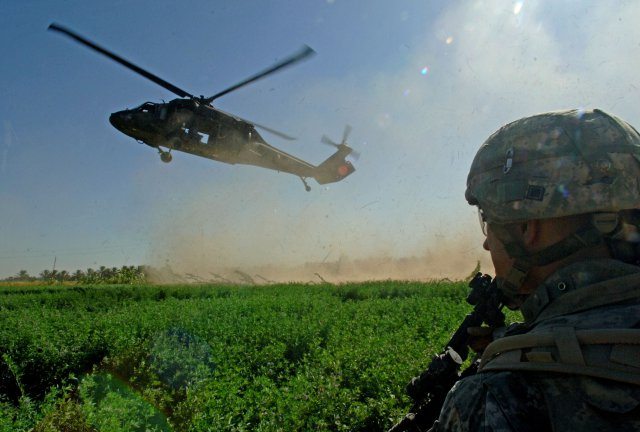Researchers at the Army’s corporate laboratory are testing new technologies it created for the Federal Aviation Administration that could give commercial and military maintenance programs earlier warning of problems.
Condition-based maintenance, known as CBM, Army Research Laboratory, or ARL, officials say, will get safer aircraft back in the air faster because it relies on repairing and replacing faulty parts in aircraft when they need to be fixed or replaced. Traditional military maintenance programs rely on time-scheduled maintenance.
Dy Le, chief of the mechanics division within ARL’s Vehicle Technology Directorate, said ARL’s work in this area supports the FAA on developing and validating CBM methodologies, and once matured, those methodologies would help the FAA certify the use of the Health and Usage Monitoring System, or HUMS, as part of commercial aircraft maintenance programs.
ARL’s customized technologies are being incorporated into the HUMS, which serves as a central repository for aircraft system information, he said.
ARL’s work in CBM is highlighted in a special two-part series as part of its broadcast program, “Inside the Lab.”
The show, airing on ARL’s website and on its YouTube Channel, focuses on a number of ARL-developed sensor technologies that are embedded in the HUMS. These sensors, many developed with the Communications-Electronics Research, Development, and Engineering Center, known as CERDEC, and the Federal Aviation Administration monitor and signal system faults.
Le said sensors placed on critical areas of the aircraft, like the tail rotor output shaft, measure performance. The information from the sensors is fed into HUMS system where maintenance crews can quickly review data and identify abnormal readings like vibrations much faster than done in the past.
He said CBM could also result in huge maintenance cost savings. If the system is fully implemented, the Army can save about $9.3 million per year in eliminating many maintenance test flights on the Apache, for example, on a direct reimbursable basis. For the UH-60 Blackhawk, it could amount to a savings of $2.6 million per year.
“Knowing the condition of the aircraft helps Soldiers avoid potential fatalities due to helicopter critical component failure,” Le said.
“The great thing about HUMS is that it provides a digital data stream which allows us to update the models for individual components of the aircraft by the bearings and the gears,” said Romeo DelRosario, chief of the electronics technology branch within ARL’s Sensors and Electron Devices Directorate. “It allows you to increase the accuracy of potential failure predictions.”
Under the ARL CBM research, ARL scientists and engineers also work with researchers from other Government agencies, including the U.S. Air Force; U.S. Navy; academia, including University of California-Irvine; University of Maryland, and industry, including Acellent Technologies Inc.; Sikorsky Aircraft Company; and Boeing Aircraft.










